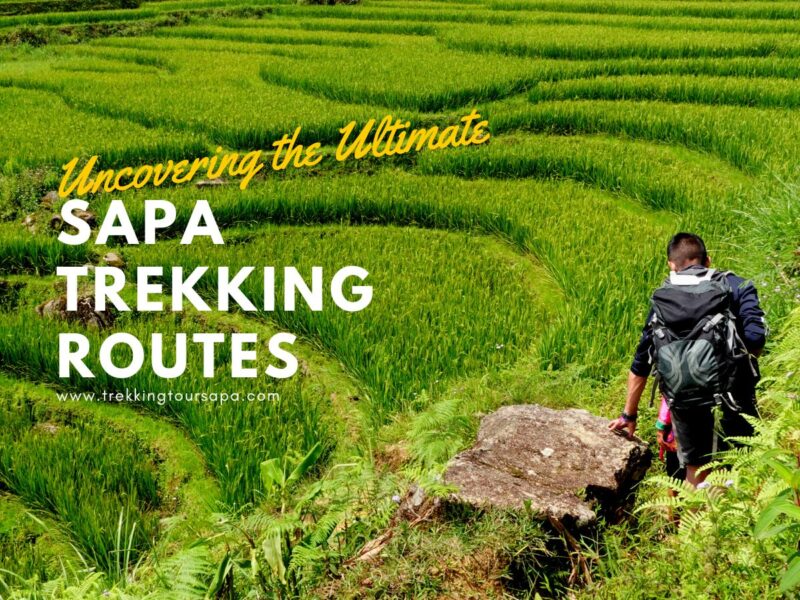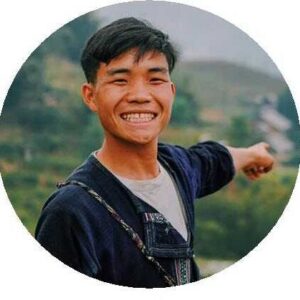Welcome! If you’re looking for the ultimate adventure in stunning Sapa, Vietnam, look no further. Trekking is one of the best activities to explore the region’s captivating mountain scenery, lush terraced rice fields, and vibrant ethnic minority cultures. This article will take you on a tour of some of Sapa’s most popular trek
Table of Contents
ToggleOverview of Sapa Town
Sapa is a mountainous district in the northernmost part of Vietnam’s Lao Cai Province. Located in the Hoang Lien Mountains, it is one of the most popular tourist destinations in the country. Sapa is known for its stunning natural beauty, tribal villages, and traditional markets. It is home to a wide variety of ethnic groups, including the Hmong, Red Dao, and Black Hmong. In addition to its beautiful landscape, Sapa is also known for its delicious food and unique cultural activities. Visitors can explore the area by hiking, biking, or taking a cable car up to the top of nearby Fansipan Mountain. With its rich culture and breathtaking scenery, Sapa is a must-visit destination for any traveler to Vietnam.
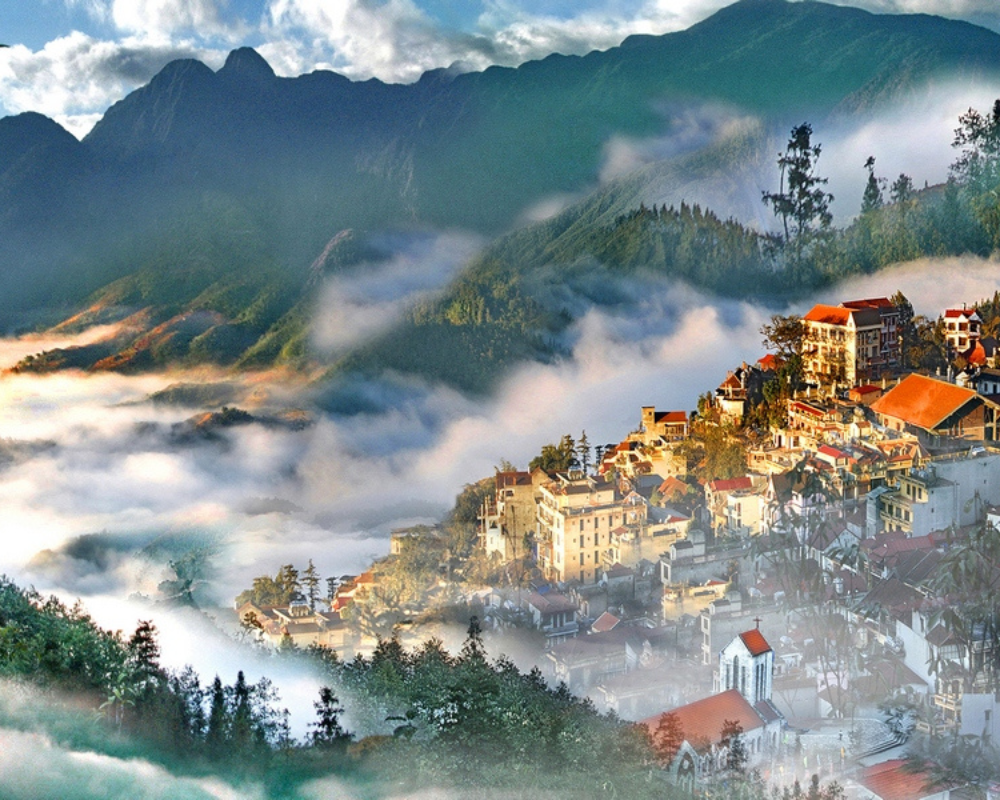
Popularity of trekking in Sapa
Trekking in Sapa is an increasingly popular activity, with thousands of visitors each year. It is a great way to explore the stunning scenery and culture of this mountainous region of Northern Vietnam. Popular trekking routes include Fansipan Mountain, Hoang Lien Son National Park, and Mount Y Ty. The trekking routes are well-marked and offer a variety of terrains and views, ranging from lush valleys to high mountains. There are also various accommodation options for those who wish to stay longer and explore more of the area. Additionally, trekking in Sapa is often combined with visits to local ethnic minority villages, offering a unique insight into the culture and customs of the region. 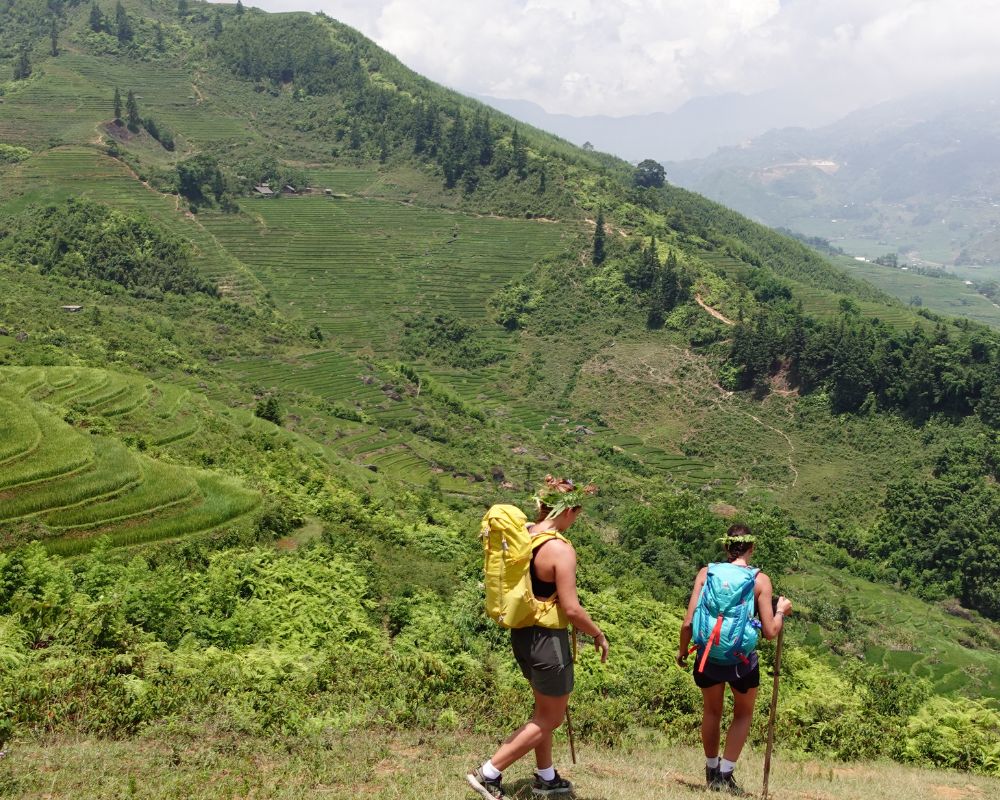
Pre-Trek Preparation
Before embarking on your trekking tour, it is important to prepare for the journey adequately. Taking the time to prepare in advance can help ensure a successful and enjoyable experience. Here are some tips to help you get ready:
1. Research the Trek: Get to know the area and the terrain you will cover. Familiarize yourself with the terrain, climate, and activities you will be doing.
2. Plan Ahead: Establish a plan for the trek. This includes deciding on a route, length of time, and what supplies you will need.
3. Get in Shape: Make sure you are physically prepared for the journey by engaging in a regular exercise routine.
4. Stay Hydrated: Bring plenty of water and drink it throughout the day.
5. Pack Appropriately: Bring the right clothing, gear, and supplies to ensure you can handle any situation that may arise.
6. Be Prepared: Be aware of the potential risks and dangers of the area. Be prepared to handle any emergency situation that may arise.
7. Stay Positive: Remember that there may be difficult times. Keeping a positive attitude will help you stay motivated and have a successful trek.
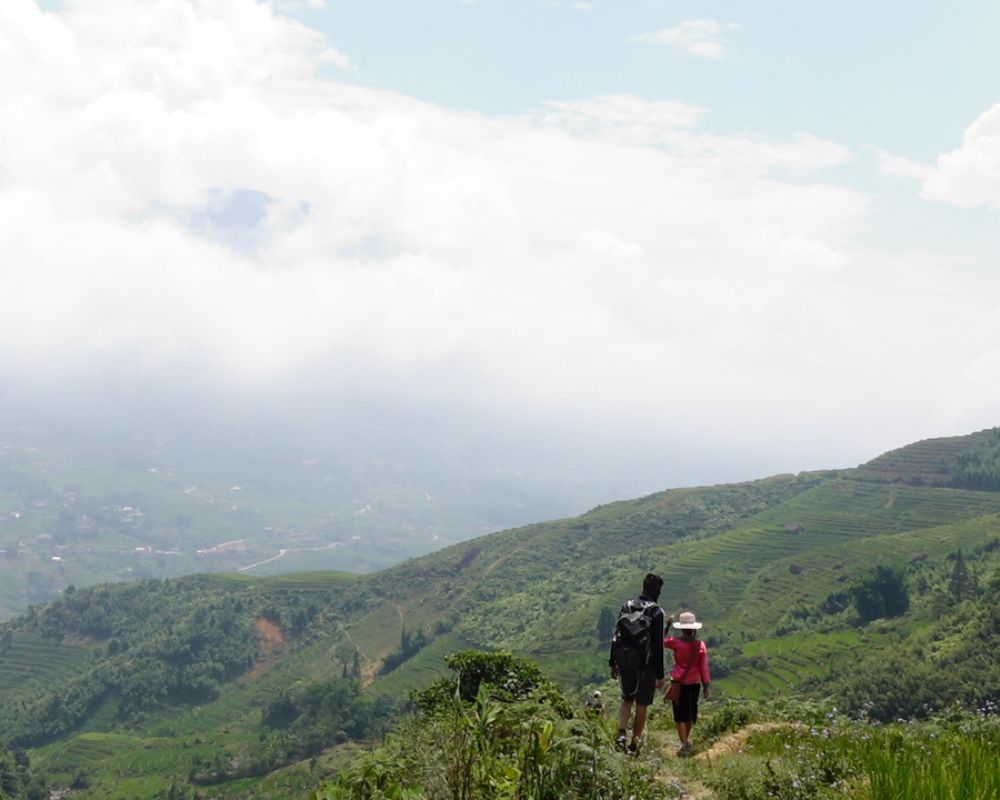
Essential gear
–Hiking boots: Hiking boots are a type of footwear designed for long-distance walking and trekking. They are typically constructed from sturdy, waterproof materials and have several supportive features, such as thick rubber soles, a high ankle, and a reinforced toe and heel. Hiking boots are usually designed with a snug fit to provide support to the ankles and feet and prevent rubbing and blisters. They are also designed with a deep tread to provide grip and traction on slippery surfaces.
–Hiking socks: Hiking socks are designed with extra cushioning and support to protect your feet from the stress of walking on long hikes. They also wick away moisture to help keep your feet dry, and some are made with material that helps to prevent blisters.
–Hiking pants: Hiking pants are typically designed to be lightweight, durable, and provide a range of motion. They are usually made of a synthetic fabric such as nylon or polyester, often including zip pockets, reinforced stitching, and a drawcord waist. They come in a variety of styles and colors, and are designed to keep you comfortable and protected while out on the trails.
–Waterproof jacket: A waterproof jacket is a type of outerwear that is designed to protect the wearer from the elements, particularly rain and wind. It is typically made of a waterproof material, such as Gore-Tex or nylon, and has sealed seams to prevent water from entering. Waterproof jackets often have features such as drawstrings, hoods, and adjustable cuffs, which help to keep the wearer comfortable and dry.
–Long-sleeved shirt: A long-sleeved shirt is a shirt with sleeves that extend past the wrists. They are typically made of cotton, polyester, or a blend of the two fabrics. Long-sleeved shirts can be styled in a variety of ways and are often worn to provide extra warmth in colder climates. They are also great for layering and can be worn with other clothing items such as sweaters, jackets, and vests.
–Hat and/or scarf: A hat and/or scarf are pieces of clothing worn for warmth and protection from the elements. Hats are usually made of wool, cotton, or synthetic materials, while scarves are often made of wool, cotton, or silk. Hats and scarves can be worn in a variety of ways, and they can add a touch of style to any outfit.
–Daypack: A daypack is a lightweight, relatively small backpack designed for day-to-day activities such as carrying school books, lunch, and other personal items. Daypacks usually have multiple compartments for organization and can be used for hiking, biking, or other outdoor activities.
–Sunscreen: Sunscreen is a preventative measure that is used to protect the skin from the sun’s harmful ultraviolet (UV) rays. It is a lotion, cream, spray, or other product that is applied to the skin regularly. Sunscreen helps to block out the UV rays that can cause sunburn, skin cancer, and premature aging. Sunscreen should be applied liberally to all exposed areas of the skin and should be reapplied every two hours, especially if swimming or sweating.
–Insect repellent: Insect repellents are products used to repel insects and other pests. These products can be applied to skin, clothing, or other surfaces. They often contain ingredients such as DEET, picaridin, and citronella.
–First aid kit: A first aid kit is a collection of supplies and equipment that is used to give medical treatment. It is often put together for use in an emergency to provide basic medical treatment, such as treating minor cuts, scrapes, and burns. The contents of a first aid kit vary, but usually include items such as bandages, gauze, antiseptic wipes, adhesive tape, scissors, tweezers, and pain relievers.
–Snacks and water bottle: Snacks are important for keeping your energy levels up during a long day outdoors. A water bottle is also necessary to stay hydrated during your activities. Some good snack ideas include granola bars, trail mix, dried fruit, nuts, and energy bars. Make sure that the snacks you bring are non-perishable, easy to eat, and don’t require any preparation.
–Map and compass: A map and compass are two essential tools for navigation. A map is used to plan a route or to determine one’s location, while a compass is used to orient oneself with respect to the cardinal directions (North, South, East, West). Together, they allow hikers to safely and accurately find their way through unfamiliar terrain.
–Headlamp or flashlight: Headlamp. A headlamp is a hands-free lighting device typically worn on the head, allowing the user to have both hands free for other tasks. A flashlight is a handheld portable device typically powered by batteries, used to provide light in dark areas.
–Sunglasses: Sunglasses are a form of protective eyewear designed to prevent bright sunlight and ultraviolet (UV) radiation from damaging or discomforting the eyes. They can sometimes also function as a visual aid, as variously termed spectacles or glasses exist, featuring lenses that are colored, polarized or darkened. In the early 20th century, they were also known as sun cheaters.
Accommodation
Sapa offers a wide range of accommodation options, from luxury resorts to budget hostels. Popular luxury resorts in Sapa include Topas Ecolodge, Sapa Luxury Hotel, and Sapa Lodge. Budget accommodation options include the Sapa Backpacker Hostel and the Sapa Homestay. For those looking for mid-range accommodation, Sapa has many options including the Victoria Sapa Resort and the Hotel de La Coupole.
Sapa Homestay is a warm and welcoming accommodation, offering guests the opportunity to experience local culture and explore the area’s natural beauty. Our team of dedicated and knowledgeable staff are committed to providing an unforgettable experience for each and every one of our guests.
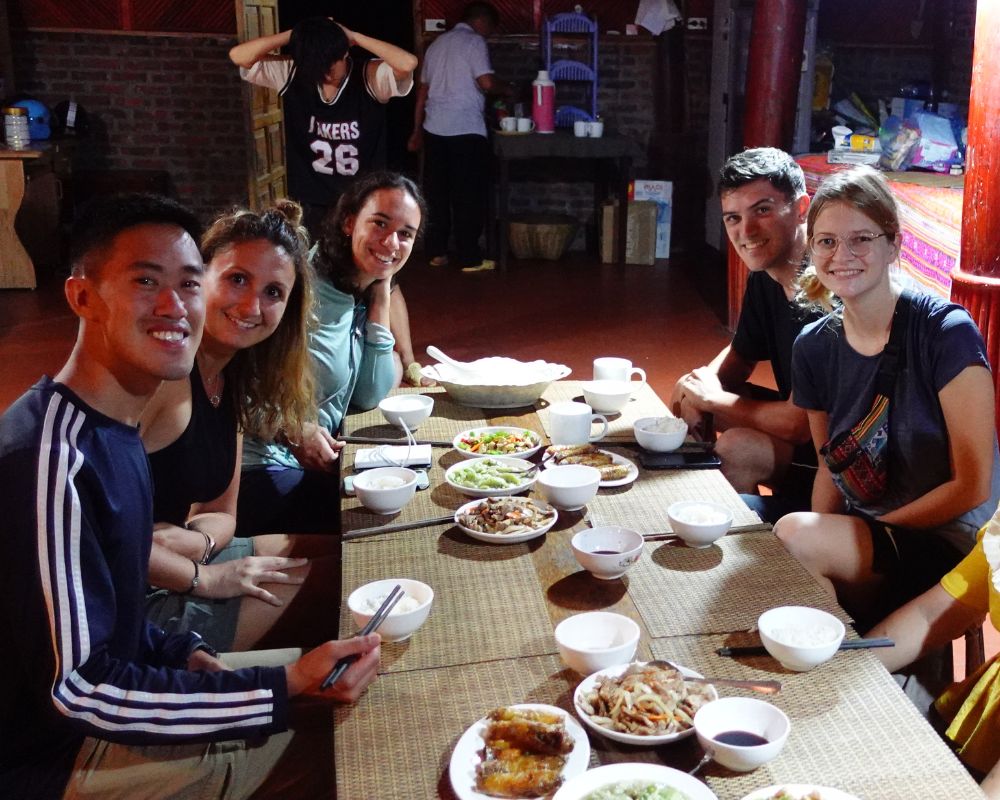
Sapa Local guides
Sapa Local Guides are local guides who live and work in Sapa town, Vietnam. They provide personalized guided tours of the area, including visits to local villages and attractions. They are knowledgeable about the culture and history of the area and provide insights into the unique lifestyle of the local people. They can also provide helpful advice on the best places to eat, shop, and stay in Sapa town. 
Sapa Trekking Routes
1. Cat Cat Village Trek: This is a one-day trek through the picturesque Cat Cat Village, located in the Hoàng Liên Son mountain range. It is a great way to explore the Hmong culture, admire the beautiful landscape, and learn about the daily life of the local people.
2. Fansipan Trek: This is a multi-day trek to the summit of Mount Fansipan, the highest mountain in Indochina. It is a great way to experience the beauty of the Hoàng Liên Son mountain range and the surrounding countryside.
3. Y Ty Trek: This is a two-day trek to the remote village of Y Ty. Along the way, you will pass through beautiful terraced rice fields, dense forests, and a variety of hill tribe villages.
4. Muong Hoa Valley Trek: This is a two-day trek to the stunning Muong Hoa Valley. Along the way, you will pass through breathtaking landscapes, explore traditional Hmong and Red Dao villages, and have the chance to participate in local festivals.
5. Ta Van Village Trek: This is a one-day trek to the traditional village of Ta Van. You will pass through lush valleys, thick forests, and traditional villages along the way. You will also have the chance to learn about the local people’s culture, traditions, and way of life.
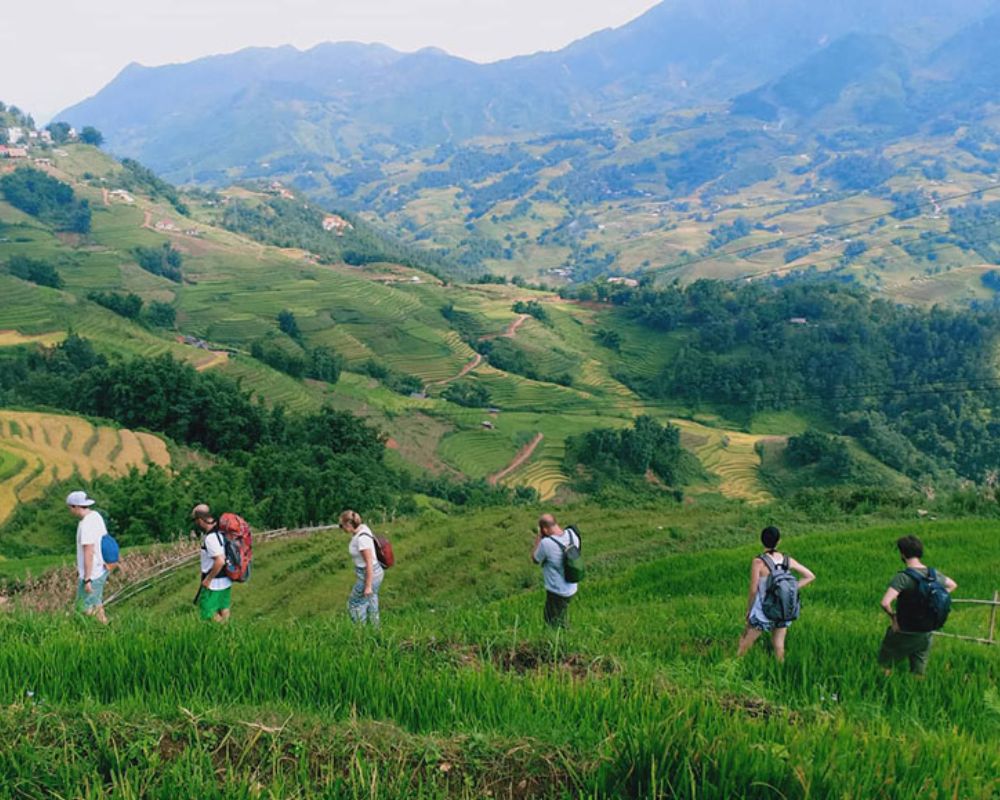
6. Fansipan trek:
Fansipan trekking is a popular trekking route in Sapa town, Vietnam, renowned for its spectacular views and challenging terrain. The trek is suitable for experienced hikers and usually takes four days to complete.
The journey begins at the foothills of Fansipan, the highest peak in the Indochina mountain range. On the first day, hikers will ascend the mountain, passing through lush bamboo forests and evergreen trees. The views become more impressive as the terrain becomes steeper, with stunning panoramas of the surrounding valleys and mountains.
The second day is the most challenging leg of the trek, as hikers will be tackling the steepest sections of the mountain. However, the reward is a spectacular view from the summit of Fansipan, at an altitude of 3,143 meters. After taking in the view, hikers will begin their descent, passing through the same forests and valleys.
Sapa 1 Day Tours
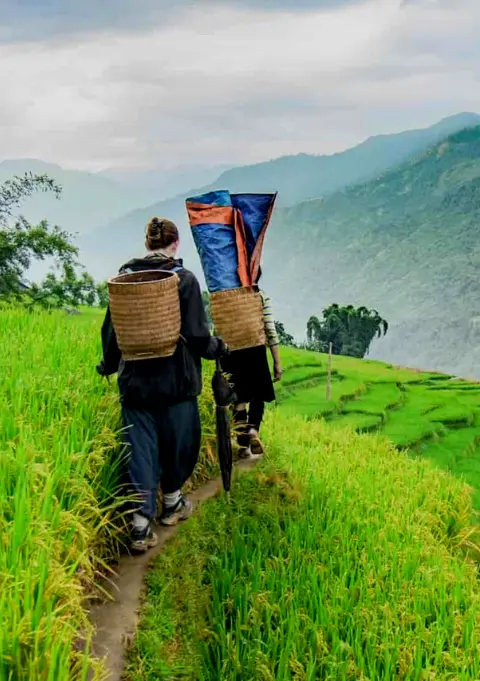
- 1 day experience
- Moderate to challenging
- Cultural immersion & active adventure
- Rice fields, valleys & villages
- Private tours
- Vegan-friendly
Sapa 2 Day Tours
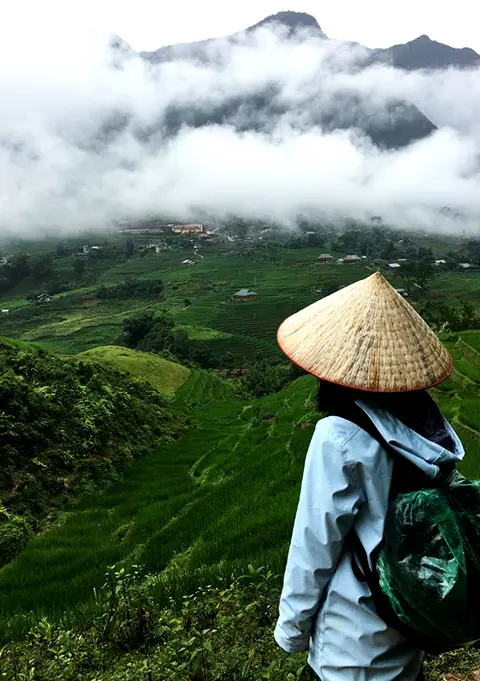
- 2 days 1 night experience
- Moderate to challenging
- Cultural immersion & active adventure
- Mountains, valleys, rice fields and villages
- Private tours
- Vegan-friendly
Sapa 3 Day Tours
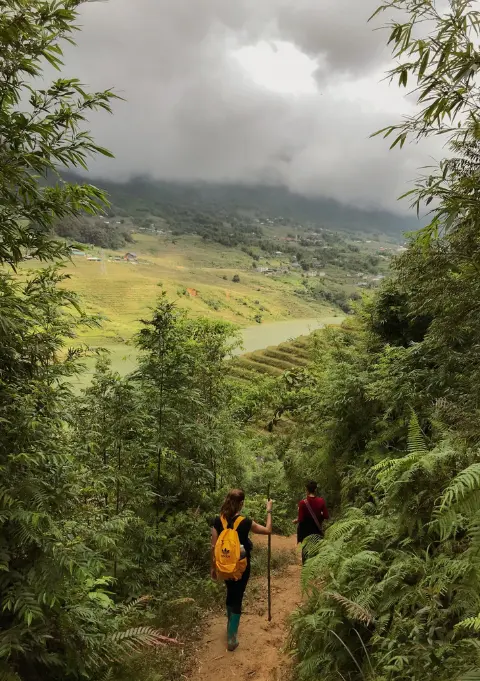
- 3 days 2 night experience
- Moderate to challenging
- Cultural immersion & active adventure
- Mountains, valley, rice fields & villages
- Private tours
- Vegan-friendly
Sapa 4 Day Tours
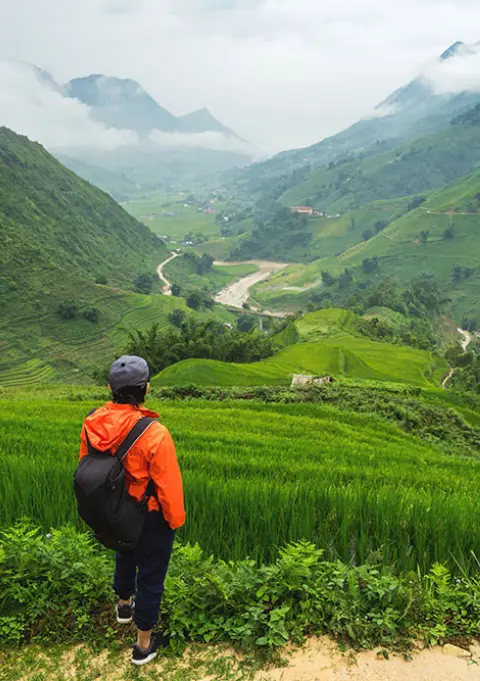
- 4 days 3 night experience
- Moderate to challenging
- Cultural immersion & active adventure
- Mountains, valleys, rice fields & villages
- Private tours – Less Touristic
- Vegan-friendly
The third day of the trek is a bit easier, with a gradual descent that leads to a local village. Here, hikers will have the opportunity to explore the culture and lifestyle of the local people, as well as enjoy some rest and relaxation.
On the final day, hikers will traverse the lush foothills of Fansipan, giving them a chance to take in the beauty of the surrounding landscape one last time. Eventually, they will arrive back at their starting point, having experienced an unforgettable trek.
Fansipan trekking is a great way to explore Sapa’s beauty, and the mountain’s challenge makes it a rewarding experience. With breathtaking views and a chance to connect with the local culture, it is an experience that should not be missed.
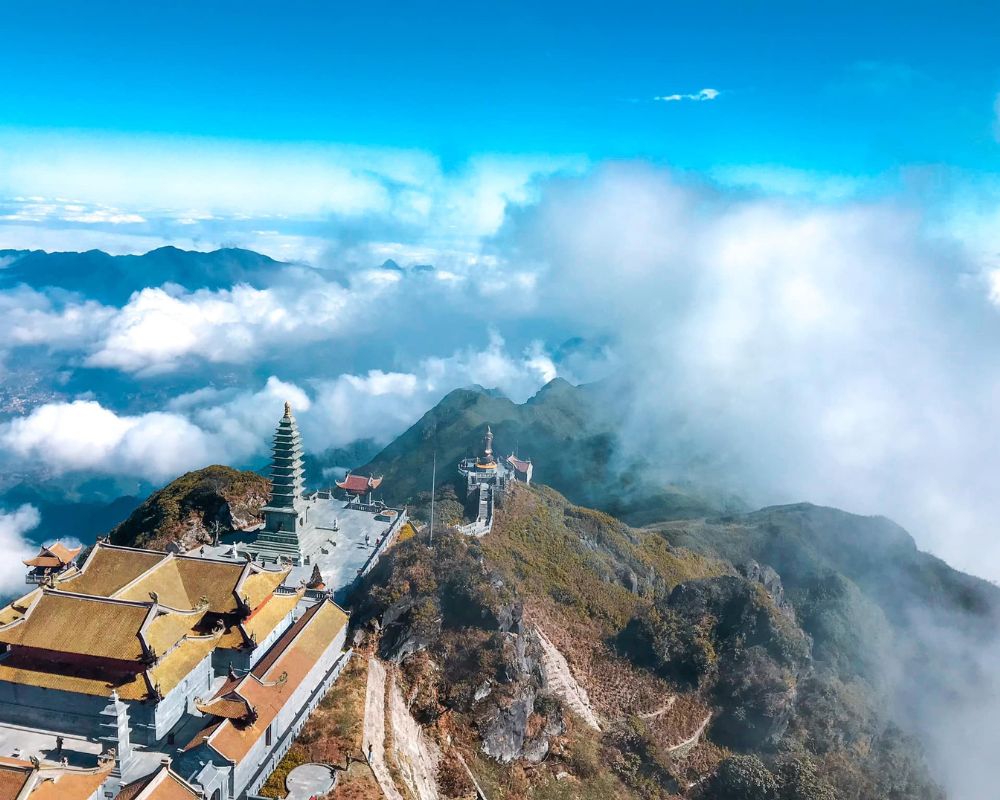
Cat Cat Village
Cat Cat Village is a popular destination for trekkers visiting Sapa, Vietnam. Located just 2 kilometers from Sapa Town, the small village is home to the Hmong people, a minority ethnic group of Vietnam.
The village is a great place to explore and learn about the culture and lifestyle of the H’mong people. Visitors can wander the narrow cobbled paths and visit the local handicraft market. Here, you will find various hand-crafted items such as jewelry, clothes, and souvenirs.
The most popular trekking route in Cat Cat Village is the “Cat Cat Waterfall Hike”. This trail takes you to the stunning waterfall of the same name, a must-see attraction of the village. The hike is difficult and takes around 2-3 hours to complete. You will pass through lush vegetation, bamboo forests, and rivers along the way.
If you’re looking for a more challenging trek, the “Cat Cat Silver Waterfall Trek” is for you. This hike takes around 4-5 hours and offers spectacular views of the surrounding landscape. You will also be able to explore the Silver Waterfall, a breathtaking sight that’s sure to take your breath away.
No matter which trek you choose, you’ll surely have a great experience exploring the beauty of Cat Cat Village. So, if you’re planning a trip to Sapa, add Cat Cat Village to your itinerary.
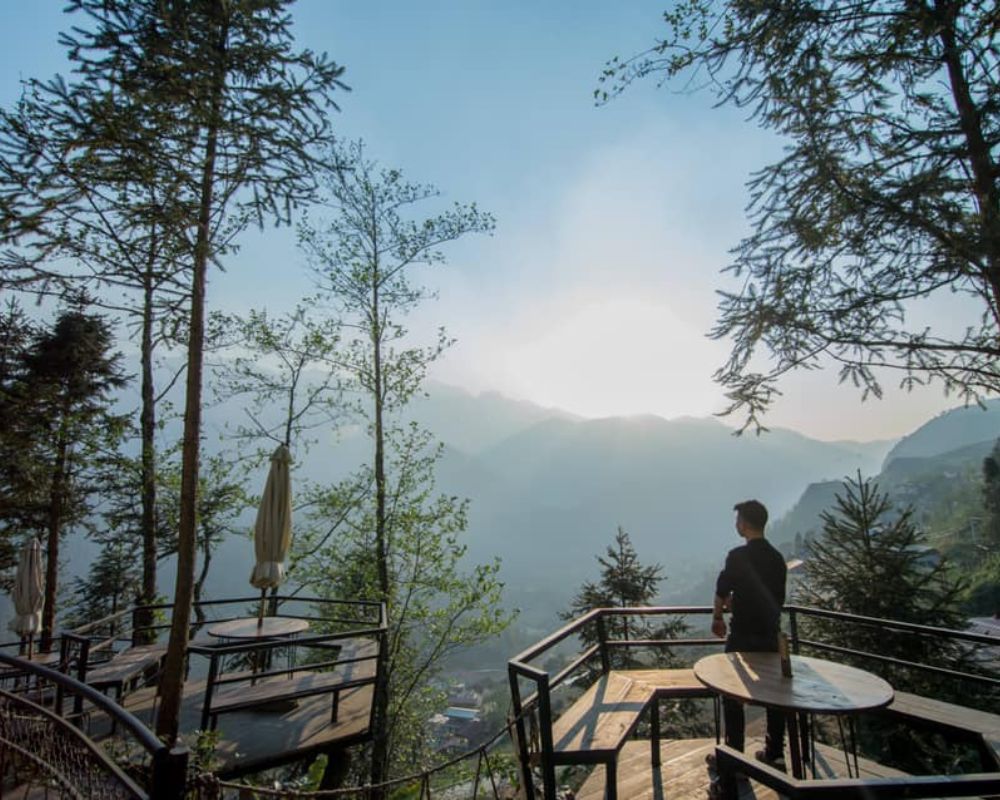
Fansipan Mountain
Route
The Fansipan Mountain Route is a popular trekking route for those looking for a challenging but rewarding experience in Sapa. The route takes trekkers up to the summit of Fansipan, the highest peak in Vietnam, and offers stunning views of the surrounding landscape.
Difficulty Level
The trek is moderately difficult and can take anywhere from one to five days, depending on the difficulty level the trekker is looking for. The route begins at the village of Sapa and winds its way up the mountain, taking in breathtaking views of the valleys and mountain peaks along the way.
At the end of the route, trekkers will be rewarded with stunning views of the surrounding landscape from the summit of Fansipan. Those who are really ambitious can continue on to the top of the peak, which stands at 3,143 metres.
Along the way, trekkers will find plenty of accommodation and places to rest, as well as local villages and markets where they can sample traditional Vietnamese cuisine.
Those looking for a challenging but rewarding experience in Sapa should definitely consider the Fansipan Mountain Route. With its stunning views and local culture, the route promises an unforgettable trekking experience.
What to expect
The trek to the summit of Fansipan Mountain is challenging, with the route taking normally take two to three days depending on the fitness level and pace of the hikers. The trail begins in Sapa, a popular tourist destination in the Lao Cai province of Vietnam. Hikers will make their way through the lush valleys of the Hoang Lien Son mountain range, passing several ethnic minority villages along the way.
The trail is well-marked and easy to follow, with several rest stops along the way. Trekkers should expect to encounter a variety of terrain, from steep hills and mountainside trails to lush jungles and meadows. The hike is particularly challenging in the rainy season, when the trails can become slippery and muddy.
Once hikers reach the summit of Fansipan Mountain, they will be rewarded with spectacular views of the surrounding area. From the summit, trekkers can observe the beauty of the northern Vietnam countryside, including the terraced fields of the ethnic minority villages, the rolling hills and valleys of the Hoang Lien Son mountain range, and the distant peaks of the Annamese Cordillera.
Trekking to the summit of Fansipan Mountain is an unforgettable experience. Hikers should expect to be challenged and rewarded with stunning views of the surrounding area. With the right preparation and a good guide, the trek to the summit of Fansipan Mountain is an adventure of a lifetime.
Muong Hoa Valley
The Muong Hoa Valley is a breathtakingly beautiful Sapa, Vietnam area located in the Hoang Lien Son mountain range. This stunning valley is the perfect place to go trekking and explore the area’s stunning scenery. Muong Hoa Valley is an excellent destination for a trekking adventure with its lush green vegetation, stunning mountains, and tranquil rivers.
The Muong Hoa Valley is home to several different trekking routes, each offering a unique experience. One of the most popular routes is the Muong Hoa Valley Trek, which takes trekkers up and down the valley, offering stunning views of the surrounding mountains. This trek includes the Ta Van, Ta Phin, and Cat Cat villages, where trekkers can experience the unique culture of the Hmong and Red Dzao people. Along the way, trekkers will pass by remote villages and beautiful waterfalls, offering a truly unforgettable experience.
No matter your route, the Muong Hoa Valley is the perfect place to trek and experience the region’s serenity. The area offers various trekking routes, with something for everyone to enjoy. Make sure to plan your trekking adventure in the Muong Hoa Valley for an unforgettable experience.
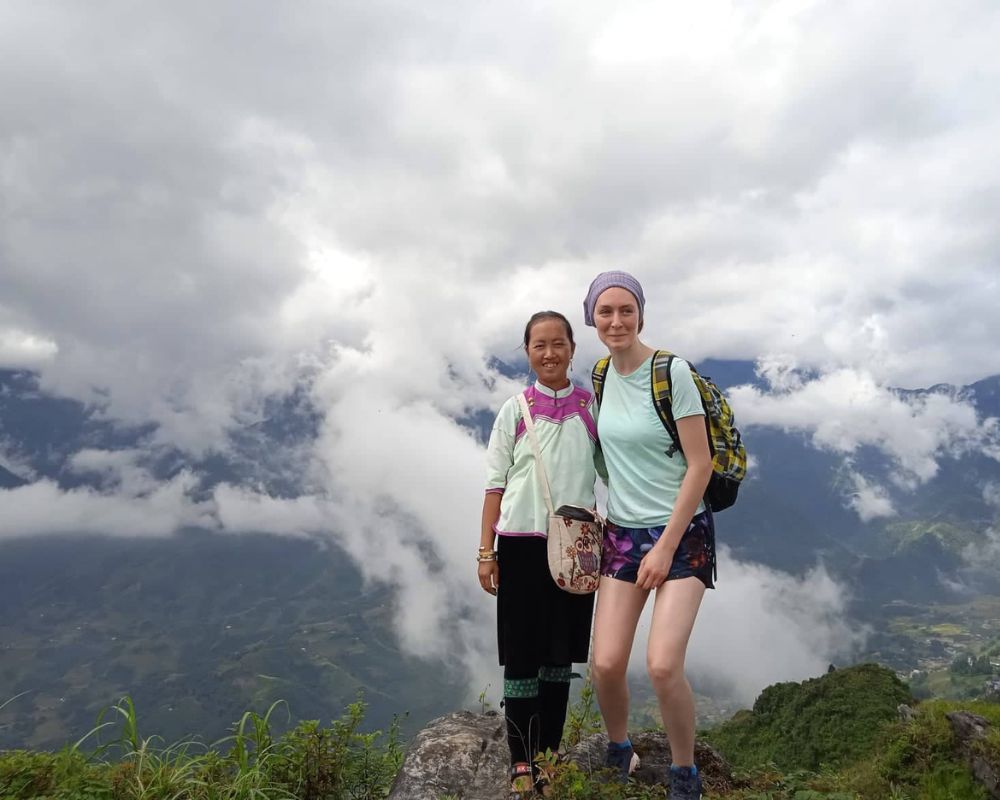
Trekking Route
The Muong Hoa Valley route is one of the most popular trekking routes in Sapa, Vietnam. The route runs through some of the most stunning scenery in the area, with lush green rice fields, towering mountains, and picturesque villages. The route traverses the Muong Hoa Valley, beginning at the town of Sapa and ending at the village of Y Linh Ho. The trek is usually done over two days, with a night spent in Y Linh Ho.
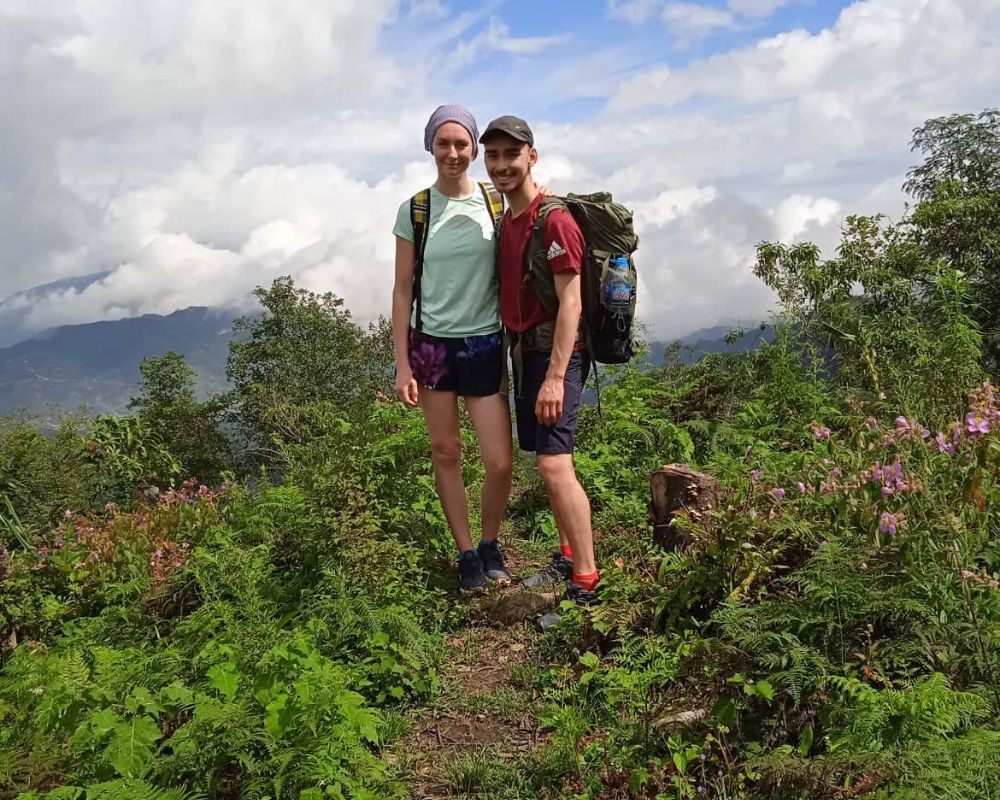
The first day of the trek begins with a climb up a steep mountain path from Sapa to the village of Ta Van. Here, trekkers will get a chance to explore the traditional stilt houses of the local ethnic minorities and take in the views of the surrounding mountains. From here, the route continues along a small river, with plenty of stops for photos and lunch.
The second day of the trek follows the same route but with a few more stops along the way. Trekkers will have the chance to explore the traditional villages of Lao Chai and Ta Van and the stunning Cat Cat waterfall. The route ends in Y Linh Ho, where trekkers can find accommodation for the night.
The Muong Hoa Valley route is an ideal trekking route for those looking to experience the beauty of Sapa. With its stunning mountain views, lush green rice terraces fields, and traditional villages, the route is sure to provide an unforgettable experience.
Sapa 1 Day Tours

- 1 day experience
- Moderate to challenging
- Cultural immersion & active adventure
- Rice fields, valleys & villages
- Private tours
- Vegan-friendly
Sapa 2 Day Tours

- 2 days 1 night experience
- Moderate to challenging
- Cultural immersion & active adventure
- Mountains, valleys, rice fields and villages
- Private tours
- Vegan-friendly
Sapa 3 Day Tours

- 3 days 2 night experience
- Moderate to challenging
- Cultural immersion & active adventure
- Mountains, valley, rice fields & villages
- Private tours
- Vegan-friendly
Sapa 4 Day Tours

- 4 days 3 night experience
- Moderate to challenging
- Cultural immersion & active adventure
- Mountains, valleys, rice fields & villages
- Private tours – Less Touristic
- Vegan-friendly
Difficulty Level
It is an excellent option for those looking for an adventurous journey and an unforgettable experience. This route is considered to be the most beautiful and challenging of the trekking routes. It offers a unique opportunity to explore the region’s stunning scenery and diverse culture. 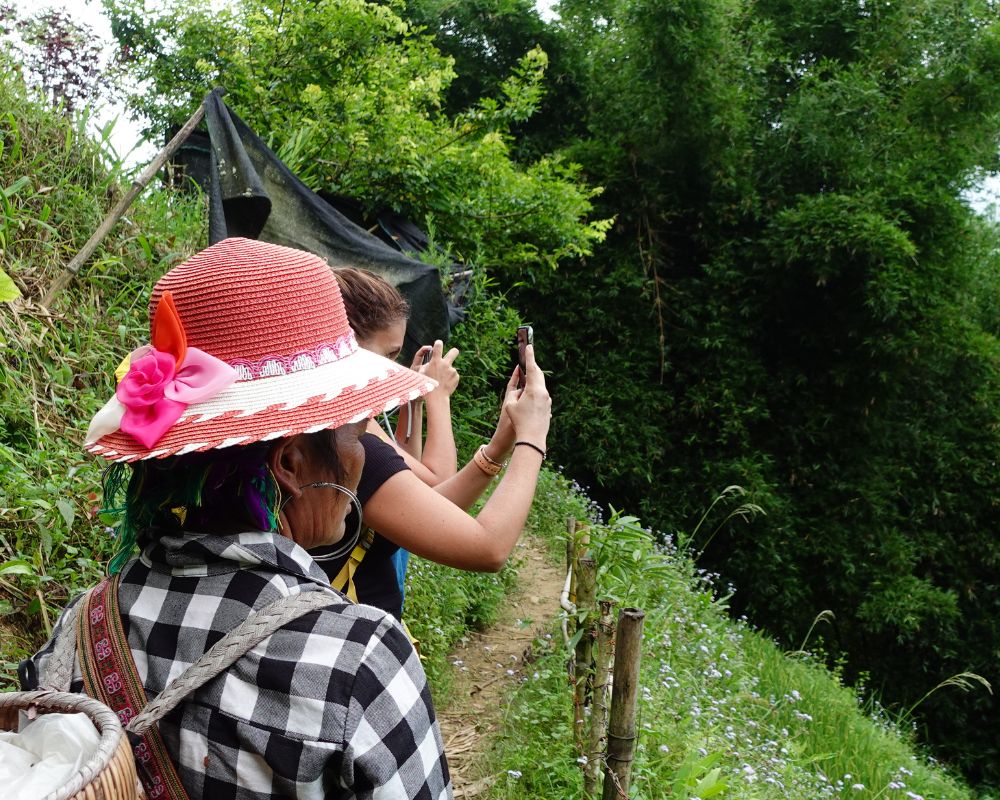
The Muong Hoa Valley Route is roughly 8 miles (13 km) and takes about 3-4 hours to complete. It is considered a medium-difficult trek and is suitable for those with some experience in trekking. The route begins in the village of Cat Cat and winds its way through the valley, passing through traditional villages and stunning landscapes.
The route is mainly downhill, making it a relatively easy trek. However, it is important to note that there are some steep sections of the trail, and the terrain can be quite rocky and challenging at times. Trekkers should be prepared for the occasional climb and be sure to wear appropriate shoes.
The Muong Hoa Valley Route offers a wealth of breathtaking sights and experiences. Trekkers will have the chance to explore lush mountain landscapes, observe traditional farming practices, and learn about the region’s unique culture. The route is also home to various flora and fauna, making it a great option for those interested in nature and wildlife.
Overall, the Muong Hoa Valley Route is an excellent option for those seeking an adventurous trekking experience in Sapa. It is a medium-difficulty route and offers a unique opportunity to explore the region’s stunning scenery and diverse culture.
What to expect
The Muong Hoa Valley is a breathtaking destination for trekkers in the Sapa area of Vietnam. While the area is best known for its stunning mountain views and diverse wildlife, it is also home to some of the region’s most vibrant and exquisite wildflowers.
During the spring and summer months, the rolling hills of the Muong Hoa Valley become a brilliant mosaic of color and texture, as wildflowers bloom in abundance. Trekkers can expect to spot colorful species such as lavender, white daisies, yellow primroses, and countless other varieties. In addition, the area boasts an impressive selection of rare orchids, such as the endangered yellow orchid, which can only be found in this area.
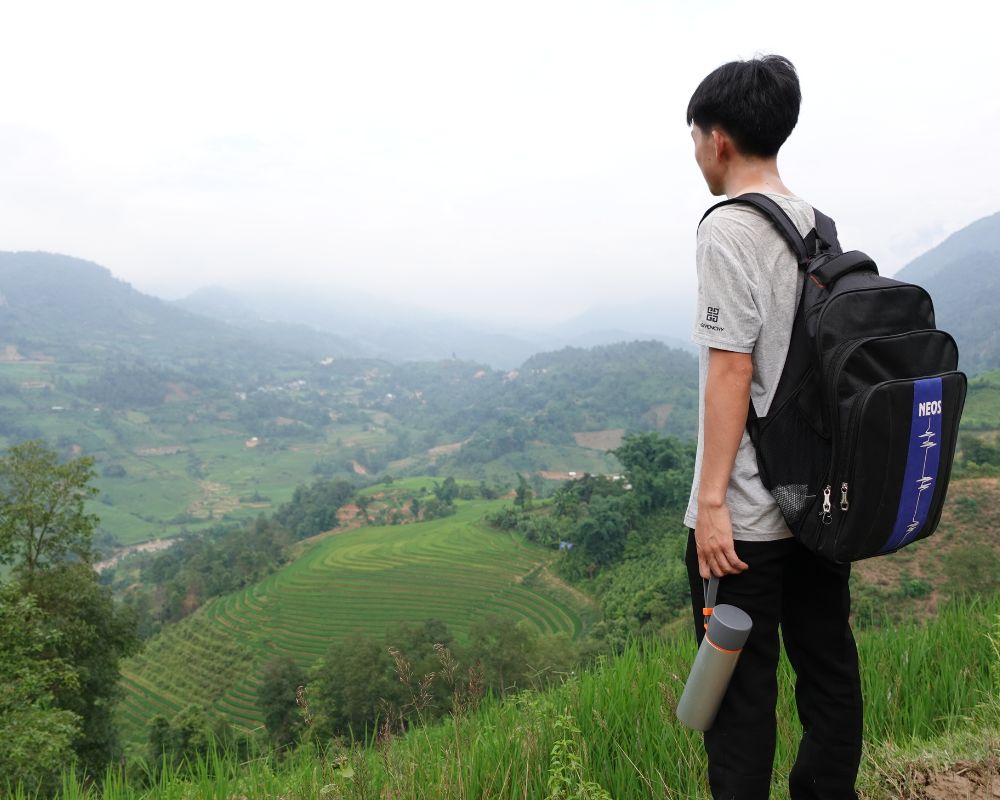
The best way to experience the beauty of the wildflowers in the Muong Hoa Valley is to take a guided trek. During the trek, experienced guides can lead you through the winding trails and point out the various species of flowers and other local attractions. This is also a great opportunity to learn more about the area’s ecology and the species of plants and animals that inhabit this unique ecosystem.
For those who prefer to explore on their own, the Muong Hoa Valley is also an ideal destination for self-guided treks. The area’s well-maintained trails make it easy to navigate the area and take in the gorgeous views. Whether you choose a guided or self-guided trek, the Muong Hoa Valley is sure to provide a unique and unforgettable experience for all visitors.
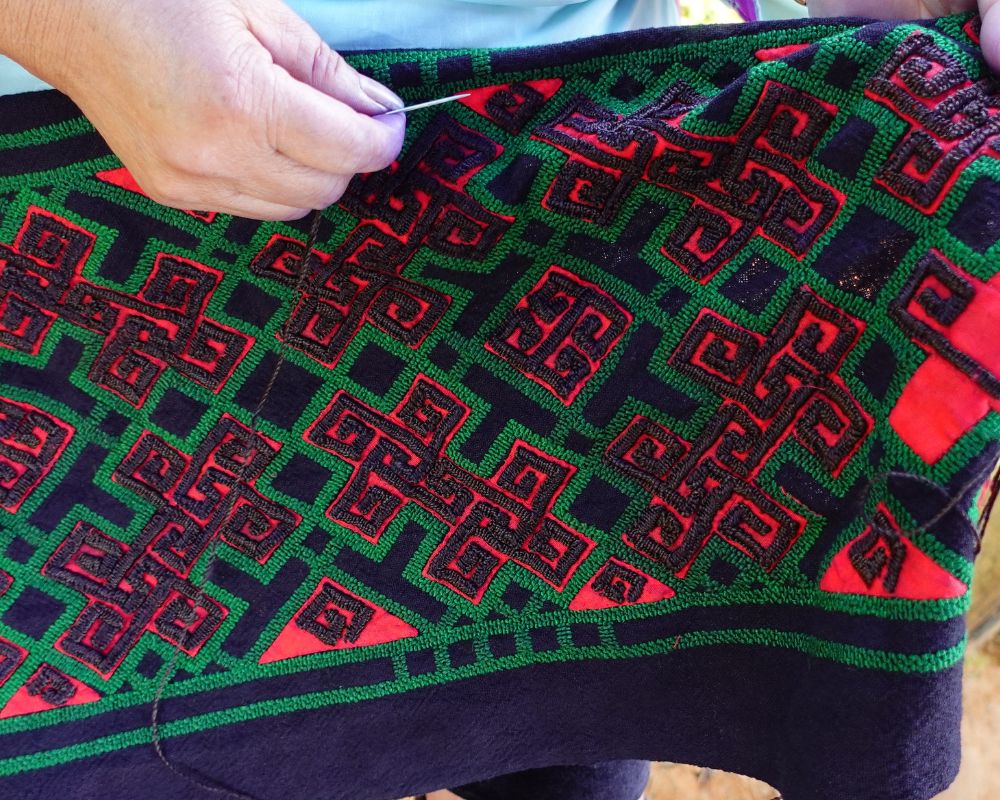
Safety Considerations
Safety should be a top priority when planning a trekking adventure in the Sapa region of Vietnam. While the area is generally safe and welcoming, there are some considerations to be aware of when venturing into the wild.
First, make sure you are physically fit enough for the journey. Trekking in the Sapa region can be strenuous, so it’s essential to be aware of your physical limitations and plan accordingly. If you are not sure, speak with a professional who can help you determine the best route for your fitness level.
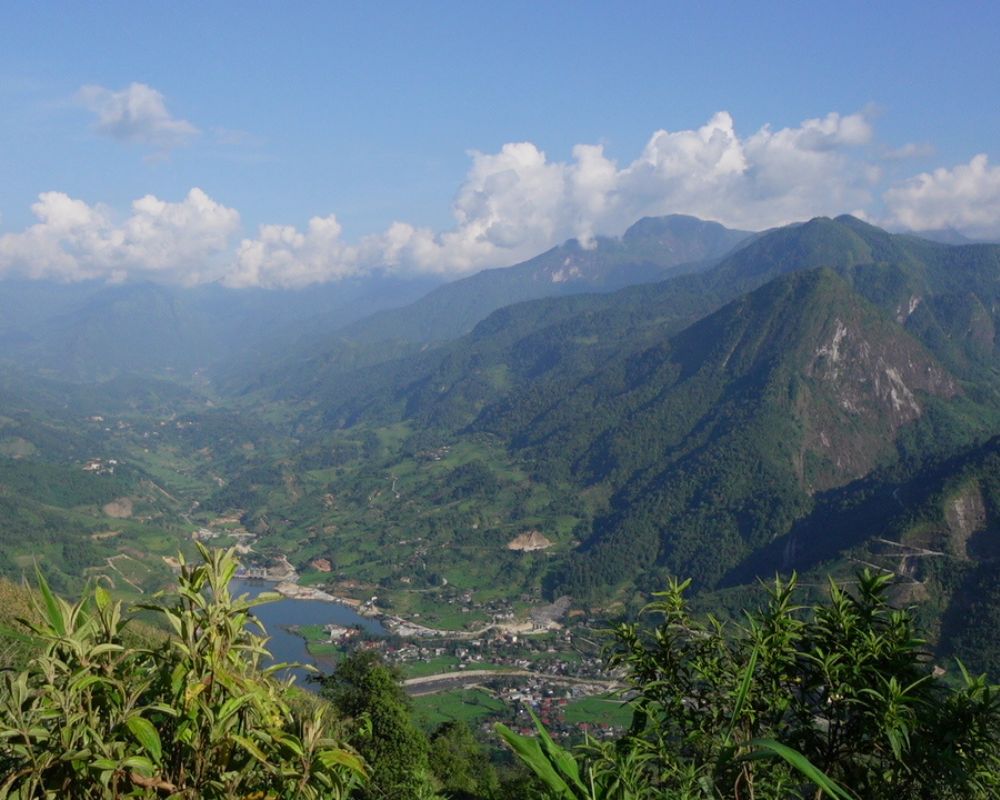
Second, be aware of the environment. Sapa trekking tours can involve a variety of terrains, from steep hills to slippery rocks, so be sure to wear appropriate shoes and clothing to protect yourself from the elements. Be sure to check the weather forecast and plan your trek accordingly.
Third, be aware of the wildlife. Sapa is home to various wildlife, including bears, wild boars, and snakes, so it’s important to be aware of your surroundings and take necessary precautions. If you encounter any animals, do not approach them and back away slowly.
Fourth, stay on the designated paths and trails. Exploring off the beaten path can be dangerous and can lead to getting lost. Follow the designated paths and trails and adhere to local rules and regulations.
Finally, always let someone know where you are going. Make sure someone knows your trekking plans and when you plan to return. This way, if you do get lost or there is an emergency, people will know where to look for you.
Overall, the sapa trekking tour can be a wonderful and rewarding experience as long as you are aware of the risks and take the necessary safety precautions. You can ensure a safe and enjoyable trekking adventure with a bit of preparation and vigilance.
Weather
Sapa is located in the north of Vietnam, in Lao Cai province and is known for its cool and pleasant climate. Located 1,500 meters above sea level, temperatures in Sapa range from 15-20°C (59-68°F) during the day and can drop to as low as 0-7°C (32-45°F) at night, so travellers should bring warm clothing.
The weather in Sapa is highly changeable and unpredictable, so it’s best to come prepared for any type of weather. The area experiences both heavy rains and snow in the winter months, and the temperatures can vary greatly depending on the time of day. The weather is generally milder in the summer months, but it can still be quite chilly at night.
When planning your trekking route, it’s essential to consider the weather. Sapa is known for its spectacular views, which can be marred by fog and rain. Although the rainy season generally runs from May to September, it’s best to check with your tour operator for the best time to visit. 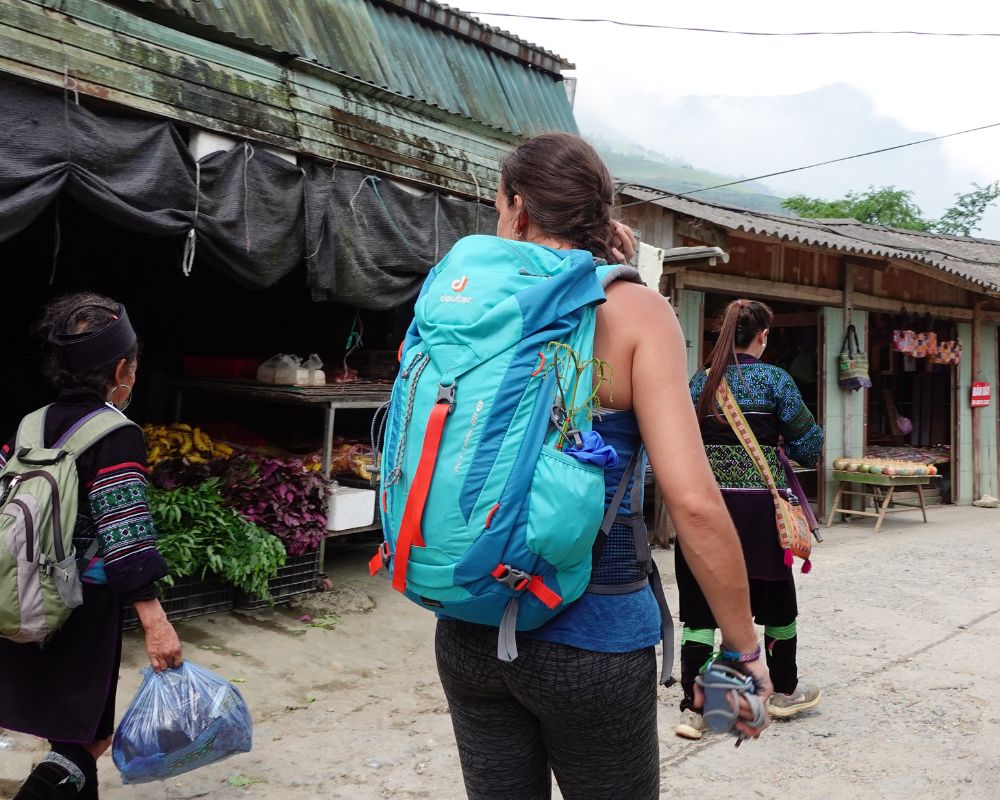
Sapa’s terrain varies, from lush rainforest to snow-covered mountains. Travelers should be prepared for any type of weather, as temperatures can vary greatly depending on the elevation. Sun protection is essential, as the sun can be quite intense at higher altitudes.
Trekking in Sapa is a unique and rewarding experience, and the weather should not be a deterrent. With careful planning and some luck, travellers can have the perfect trekking experience in this beautiful mountainous region.
Sapa Trekking: Safety Tips
Trekking in Sapa is a great way to explore the region’s spectacular scenery and culture, but it is important to ensure your safety. Here are some safety tips to keep in mind when planning your trekking route in Sapa.
1. Plan Ahead: Before starting your trek, research the area and plan your route accordingly. Check the weather forecast, terrain, and elevation of the route to ensure you are prepared.
2. Follow the Path: Trekking in Sapa can be unpredictable, so it is important to stick to the designated routes and paths. Avoid any unmarked trails or shortcuts to ensure your safety.
3. Wear the Right Gear: Wear the appropriate clothing for your trek. Invest in good quality waterproof boots, a rain jacket, and comfortable clothes that will help protect your skin from the elements.
4. Stay Hydrated: Bring plenty of water and snacks for your trek. Staying hydrated and well-nourished will help you stay energized and alert.
5. Let Someone Know: Make sure to inform someone at home of your plans before you depart. Give them a copy of your route and an approximate return time so they can contact the proper authorities if you don’t return as planned.
By following these safety tips, you can ensure that your Sapa trekking tour experience is a safe and enjoyable one. With the right preparation and – you won’t knowledge, you can confidently take on the trails of Sapa. 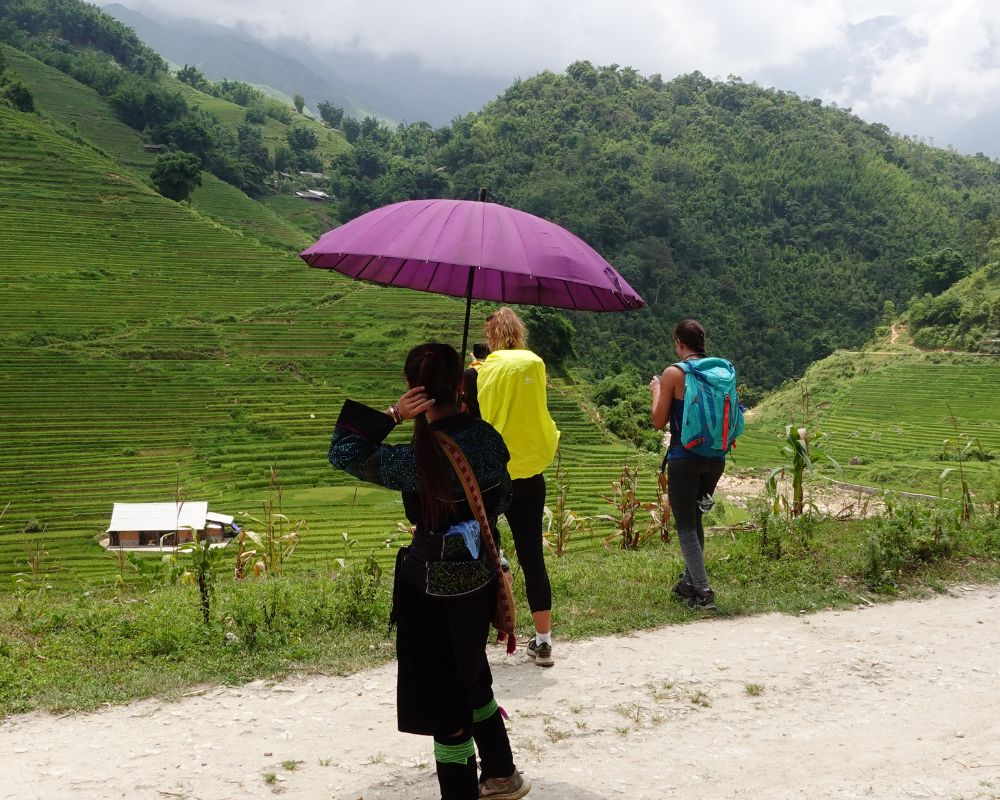
Sapa Trekking Tours
Sapa Trekking Tours offer a unique adventure in Northern Vietnam. With experienced guides and a wide range of trekking routes, you can explore this region’s beautiful mountain scenery and vibrant culture. Whether you are a beginner or a seasoned trekker, Sapa Trekking Tours has something to offer everyone. They provide the best trekking equipment and take care of all the arrangements, so you can just focus on enjoying your adventure!
Conclusion
Sapa trekking offer something for everyone, from the novice hiker to the experienced mountaineer. Whether you’re looking for a leisurely stroll through the countryside or an adrenaline-pumping challenge, the variety of trails in Sapa ensure that you’ll find something that’s perfect for you. With breathtaking views, unique cultures and a rich history, trekking routes are an unforgettable adventure that everyone should experience. So pack your bags and hit the trails – you won’t regret it!
Summary of trekking routes
Trekking through the beautiful mountain region of Sapa is a popular activity for travelers and adventurers alike. With stunning views and a range of different trails, there is something for everyone to enjoy. Before heading out on your trekking journey, it is important to familiarize yourself with the region’s various trekking routes.
For those looking for a moderate trek, the Fansipan summit is a great option. This 2-3 day trek takes you to the highest point in Vietnam and offers panoramic views of the stunning landscape. If a more leisurely trek is preferred, the Cat Cat village trek is the perfect choice. This 2-3 hour trek takes you through the lush green valleys of Sapa and offers a chance to explore the local villages.
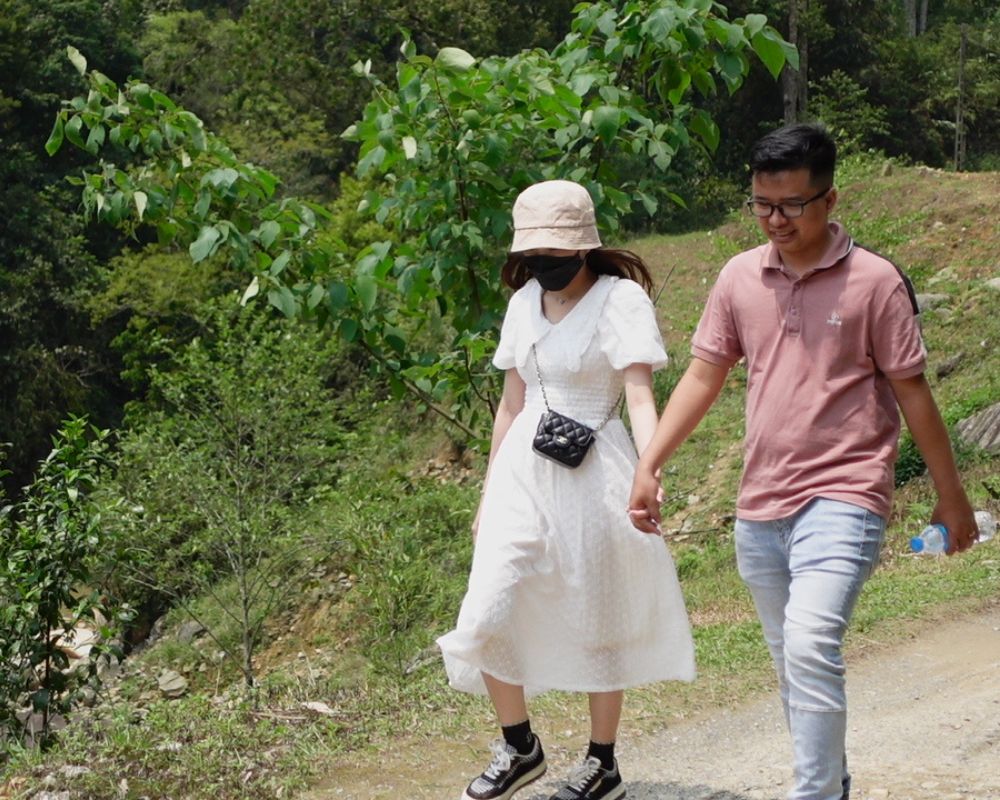
The Muong Hoa Valley trek is ideal for those seeking a more challenging trek. This 4-5 day trek takes you through some of Sapa’s most beautiful scenery and includes a climb up to the highest peak in the area, Fansipan. This trek is recommended for experienced trekkers only, as some parts of the trail are quite steep and challenging.
Finally, for those looking for a truly unique experience, the Sapa Vietnam Trek is a perfect choice. This 1-2 week trek takes you through some of the most remote areas of Sapa and offers a chance to get off the beaten path. This trek is recommended for experienced trekkers only and requires a high level of fitness and preparation.
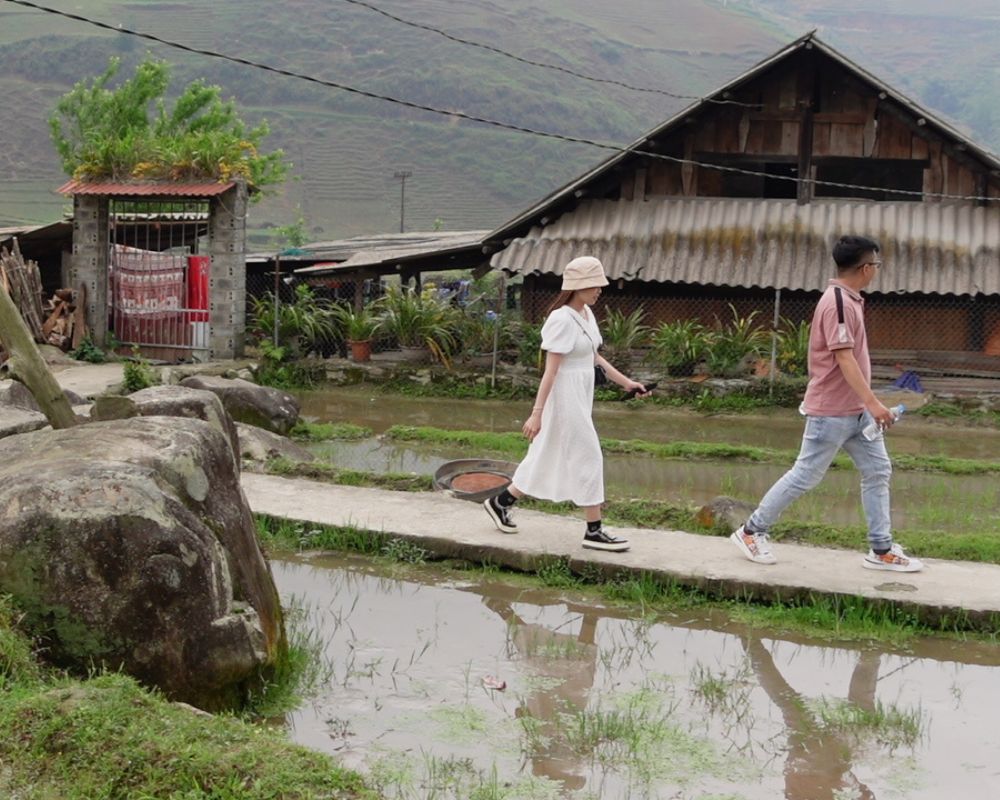
No matter which trekking route you choose, it is important to take all necessary safety precautions. Make sure to wear sturdy shoes, bring plenty of water, and be aware of the potential dangers of the region. These simple safety tips will ensure a safe, enjoyable trekking experience in Sapa.
Encouragement to go trekking in Sapa
Trekking in Sapa is one of the most popular activities in the area, and it’s easy to see why. For those looking for an adventure, a trekking route in Sapa is the perfect way to explore the region.
There are various trekking in Sapa, from the easy to the difficult. Most routes are well-marked, making it easy to find your way. There are more remote and difficult trails for those looking for something more challenging. No matter what level of trekking you’re looking for, there’s something for everyone in Sapa. 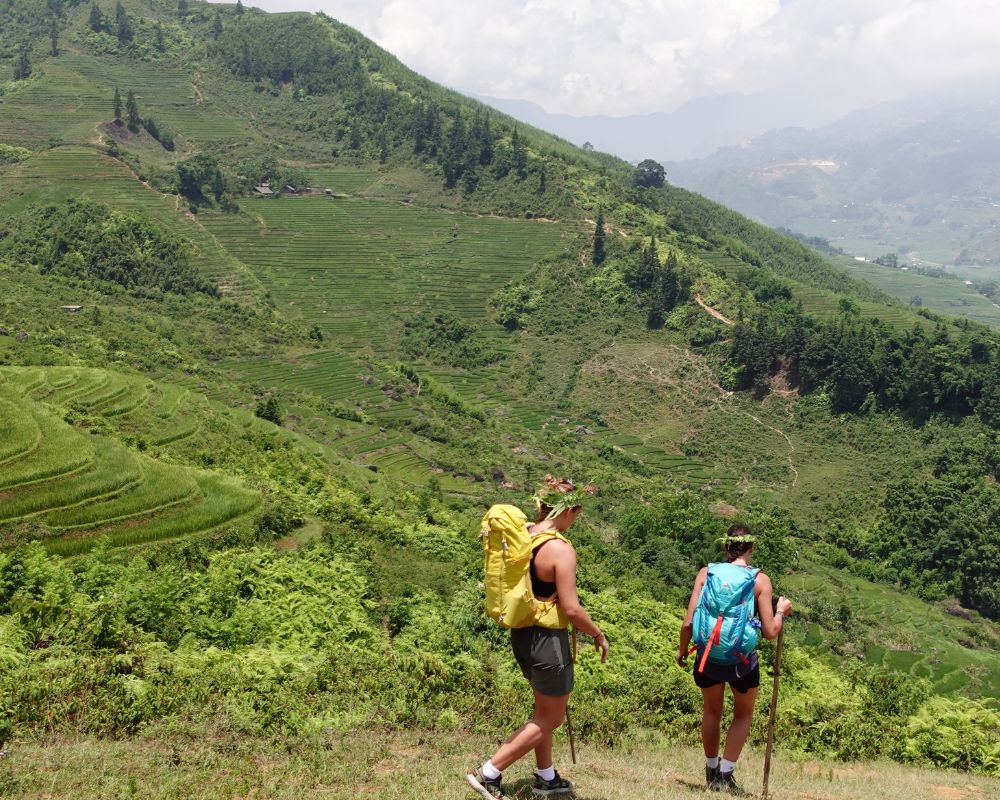
The scenery in Sapa is breathtaking. You’ll explore the mountains, rice terraces fields, and ethnic minority villages. As you make your way up the mountain, you’ll also experience the area’s unique culture. It’s a great way to immerse yourself in the local culture and to get a better understanding of the people and their way of life.
Trekking in Sapa is also a great way to get some exercise. The hikes are a great way to get your blood pumping and to enjoy the fresh air. Plus, you’ll get to work up an appetite for the delicious local cuisine.
For those looking for a unique and rewarding experience, trekking in Sapa is a must-do. You’ll get to explore the area’s stunning landscapes and unique culture while also getting some exercise. So, grab your hiking gear and head out into the mountains of Sapa!
Sapa Trekking Routes FAQ
1. What is the most challenging aspect of trekking in Sapa?
Trekking in Sapa can be a challenging experience due to its mountainous terrain. The steep, rocky and often slippery trails demand strength and agility, as well as some level of fitness. Additionally, the weather can be unpredictable and vary drastically from day to day, making it difficult to plan. This makes it essential to be prepared for any eventuality, such as packing the appropriate clothing and supplies. Finally, trekking in Sapa can be a physically and mentally demanding activity, and it is always best to be accompanied by an experienced guide in order to ensure a safe and enjoyable experience.
2. What do you consider to be the best way to prepare for a Sapa trekking route?
What do you consider to be the best way to prepare for a Sapa trekking route? The best way to prepare for a Sapa trekking route is to be physically and mentally prepared. Physically, make sure to practice walking and hiking regularly in order to prepare your body for the trek. It is also important to be mindful of what you are packing; make sure to bring the appropriate clothing and equipment for the trek. Mentally, it is important to be mentally prepared for the trek. This can include doing research on the trek, understanding the route, and mentally preparing yourself for any potential physical and mental challenges that may arise. Additionally, make sure to get a good night’s rest before the trek and to bring snacks and plenty of water for the journey.
3. What tips or advice would you give to other travelers looking to explore Sapa?
My advice to other travelers looking to explore Sapa is to plan ahead. Make sure you have all the necessary supplies and accommodations booked. Research the area and surrounding attractions to ensure you get the most out of your trip. Additionally, be sure to be respectful of the local culture and customs and be aware of your impact when traveling. Lastly, make sure to take plenty of pictures to capture the beauty of Sapa!
4. What surprised you most about the trekking routes in Sapa?
What surprised me most about the trekking routes in Sapa was the sheer variety of landscapes I encountered. From lush tropical forests, towering limestone cliffs, and terraced rice paddies, the trekking options offered something for everyone. I was also amazed by the cultural diversity I experienced, as I encountered several different ethnic minority groups along
I was most surprised by the variety of routes available. From easy hikes to challenging multi-day treks, there are endless possibilities for exploration in Sapa. The landscapes you get to explore along the way are incredible, with lush green valleys, terraced rice fields, and stunning mountain views. I was also impressed by the friendly local guides who were always willing to offer advice and share their knowledge of the area.
5. What are the must-see sights along the Sapa trekking routes?
The Sapa trekking routes offer a variety of stunning natural sights, including crystal-clear lakes, lush rice terraces, soaring mountains, and vibrant, colorful hill tribe villages. Popular destinations for trekkers include Muong Hoa Valley, Cat Cat Village, Ta Phin Village, and Heaven’s Gate. All of these destinations provide a beautiful backdrop of natural landscapes and offer authentic cultural experiences with the local hill tribes. Trekkers should also consider exploring the Black Hmong, Red Dzao, and Giay villages, all of which provide unique insights into the culture and customs of the region.
6. What essential items should travelers bring on a Sapa trekking route?
Travelers should bring items such as appropriate clothing and shoes, a daypack, water bottles, a hat and sunscreen, snacks, insect repellent, a first-aid kit, a flashlight, a map and a compass, and a camera. It is also important to bring any necessary medications and to tell someone at home about your travel plans and expected return date.
Sapa 1 Day Tours

- 1 day experience
- Moderate to challenging
- Cultural immersion & active adventure
- Rice fields, valleys & villages
- Private tours
- Vegan-friendly
Sapa 2 Day Tours

- 2 days 1 night experience
- Moderate to challenging
- Cultural immersion & active adventure
- Mountains, valleys, rice fields and villages
- Private tours
- Vegan-friendly
Sapa 3 Day Tours

- 3 days 2 night experience
- Moderate to challenging
- Cultural immersion & active adventure
- Mountains, valley, rice fields & villages
- Private tours
- Vegan-friendly
Sapa 4 Day Tours

- 4 days 3 night experience
- Moderate to challenging
- Cultural immersion & active adventure
- Mountains, valleys, rice fields & villages
- Private tours – Less Touristic
- Vegan-friendly
